Dawn in south-east Queensland. I’m up early, before the stifling summer heat settles in and the thunderstorms brew up over the hinterland. I walk my usual route through the neighborhood, keeping a mental list of birds as I go: the tu-heer of a figbird, the short pee-pee-pee chime of a pale-headed rosella, an explosion of rainbow lorikeets, and the mournful cry of a Pacific koel perched high in a purple-blooming jacaranda.
Thirty minutes and 30 birds in, I turn back for home. A call begins in the distance, growing louder as the bird flies in my direction. This is no melodious birdsong. It’s a raucous, undulating shriek delivered at full volume, echoing across the landscape and through my skull.
The din grows louder and louder until three shadows streak overhead. With their crucifix shape, enormous curved bills, and blood-red red eyes, they look like a miniature hornbill or a drab, demented toucan. But these winged wonders are channel-billed cuckoos, the world’s largest brood parasite and perhaps my favorite summer migrant to eastern Australia.
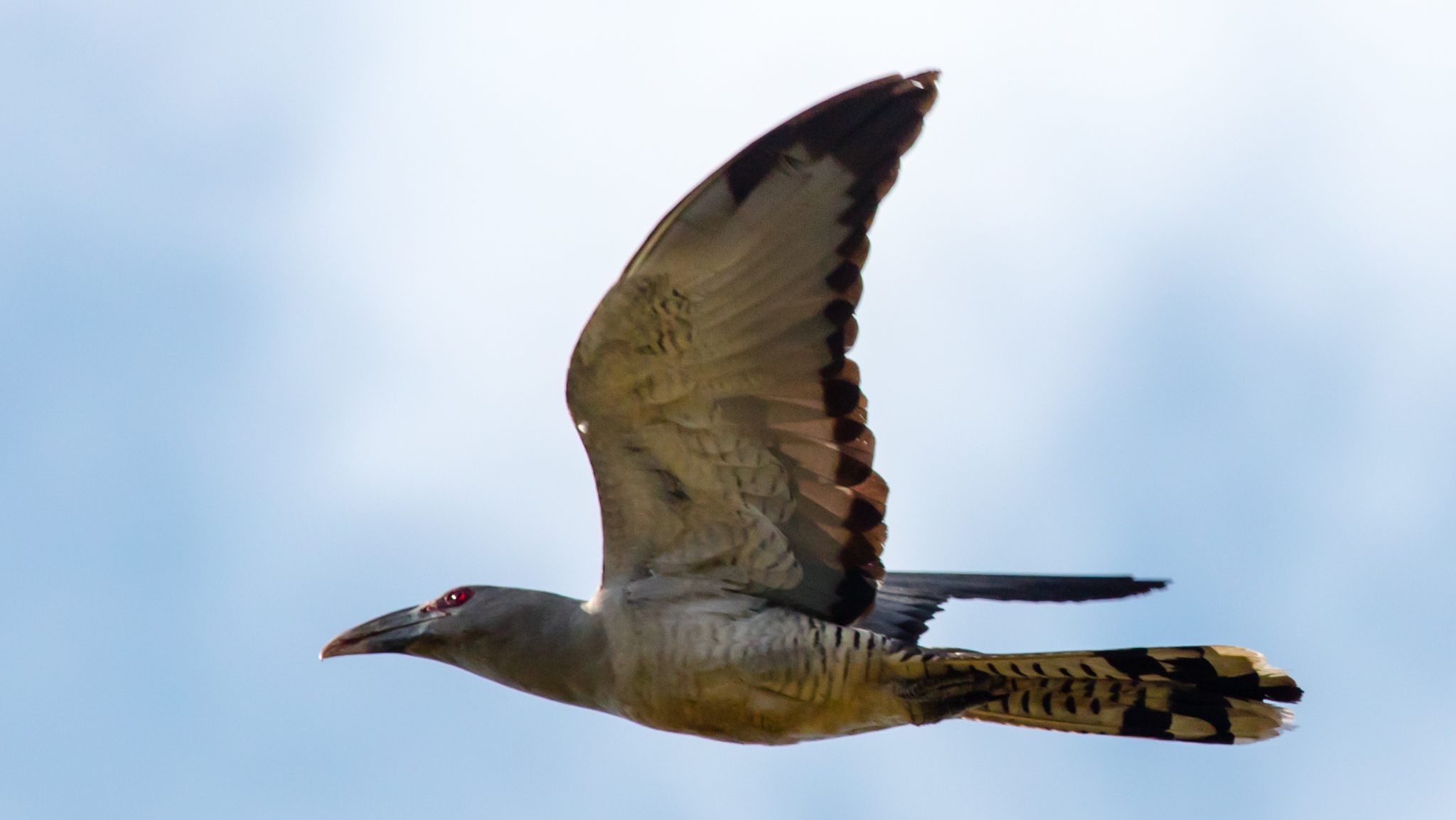
Introducing Scythrops novaehollandiae
My first encounter with a channel-billed cuckoo is seared into my memory: I was driving along a back road when a ginormous bird flew low in front of the car, narrowly missing the windshield and landing in a fruiting tree to my left. Hopeless twitcher that I am, I slammed on the brakes and hopped out. In the tree above me, scarfing down grape-sized yellow figs, was something that looked like it flew straight out of a Jurassic World CGI brainstorming meeting.
What the heck is THAT?
Five more birds clambered through the fig tree, devouring fruit and making a general ruckus. I didn’t have a field guide on hand, so I typed “really big bird with red eye” into Google. It didn’t take long for me to ID them as channel-billed cuckoos, because nothing else in Australia looks even remotely like this bird.
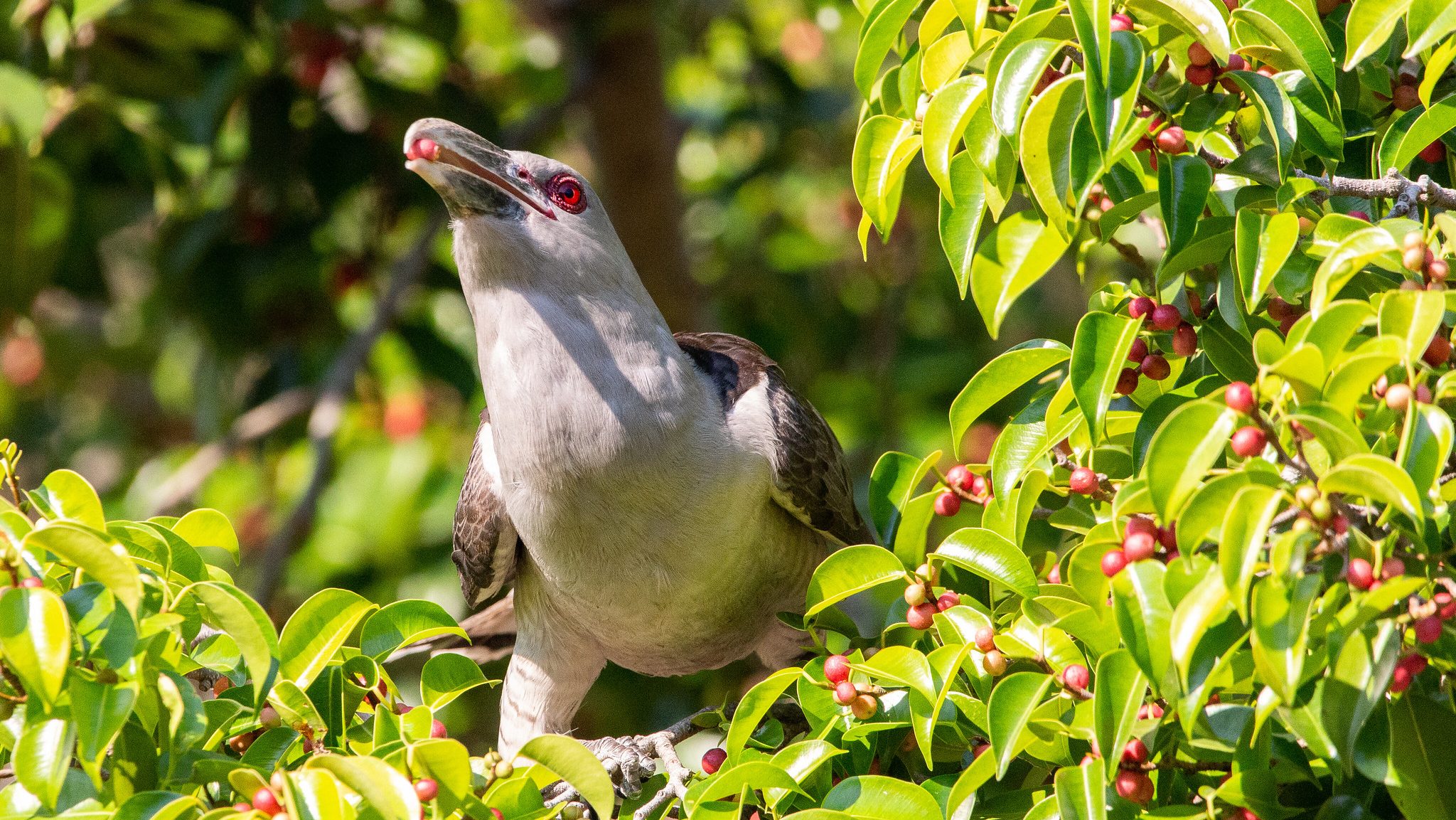
They’re the size of a raptor, with broad wings, a long, trailing tail, and a honking great bill reminiscent of hornbills or toucanets. Their plumage is a light grey, with thick black and white banding on the tail feathers. And their eyes: large, beady, blood-red, surrounded by a strawberry-colored ring of bare skin.
Early European observers noted the bird’s similarity to other non-cuckoo species, describing them as “’psittaceous [parrot-like] hornbills.” It’s an apt description, given the bird’s size, which can be up to 28 inches long, with a wingspan of up to 3.5 feet.
For Australians, the arrival of channel-billed cuckoos heralds the beginning of summer. The birds arrive in northern and eastern Australia sometime between September and November, migrating from their wintering grounds in eastern Indonesia and New Guinea.
Once the channel-bills arrive they have two objectives: feast on insects, figs, and other fruiting trees; and pass on their genetic material with as little effort as possible.
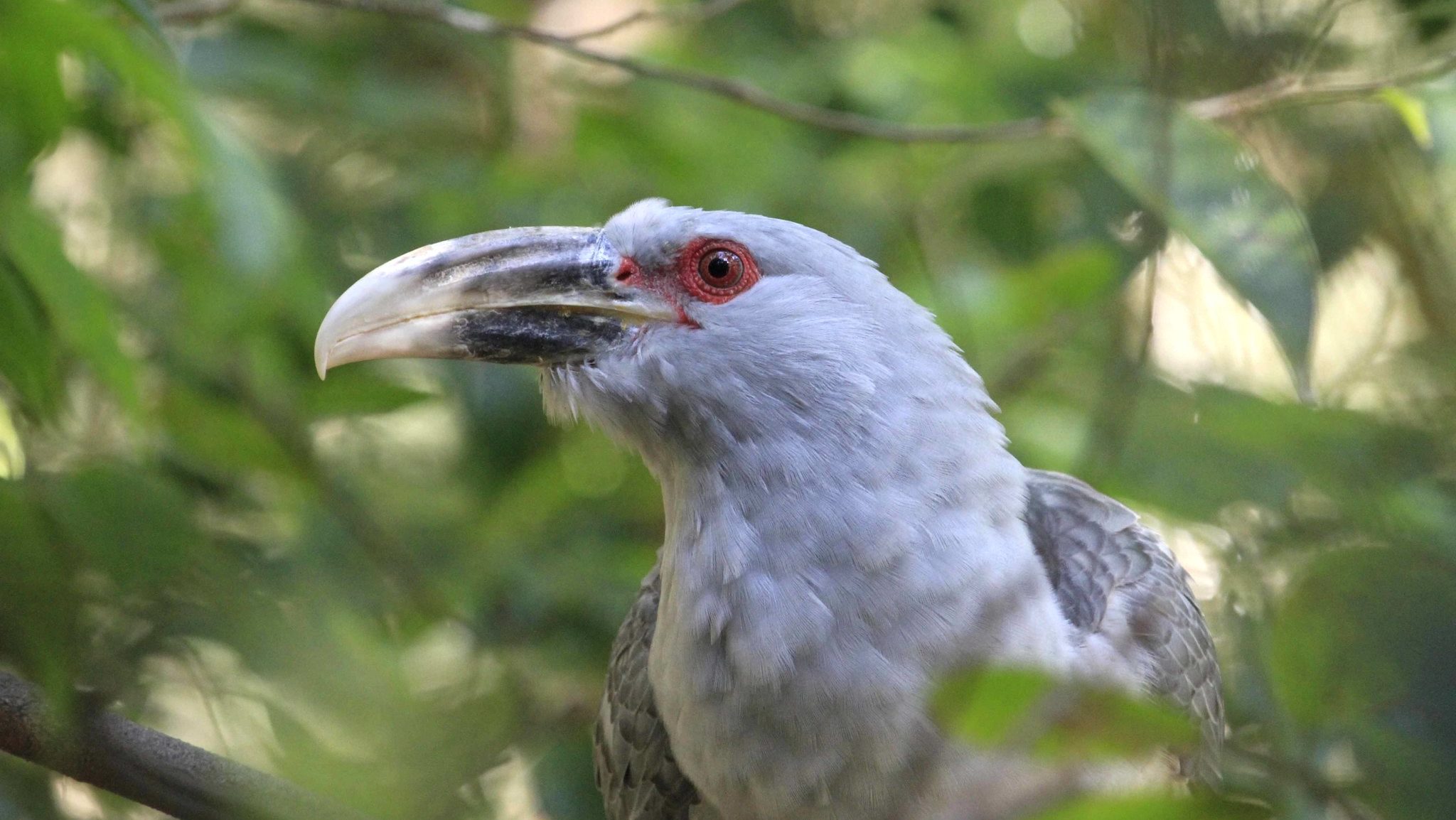
Brood Parasites and Beleaguered Babysitters
Cuckoos — including the channel-billed cuckoo — are brood parasites, which is just a fancy way of saying that they’re lazy parents. (Or strategic, depending on how you feel about kids.) Brood parasites lay their eggs in the nests of other species, letting the other birds do all the hard work of incubating, feeding, and fledgling their chicks.
It’s a useful evolutionary strategy. All the cuckoos have to do is mate and produce the egg. They avoid the energy expenditure and risks that come with building a nest, defending themselves and their young from predators, and feeding hungry mouths. Brood parasitism also evolved in other bird groups besides cuckoos, including cowbirds, honeyguides, and one species of duck.

Channel-billed cuckoos are both the largest cuckoo and the largest brood parasite in the world. When it comes time to breed, male channel-billed cuckoos woo females with gifts of fruit and insects, and the pairs bond further by calling to one another. (And by calling I mean raucous shrieking at all hours of the day.)
When the female is ready to lay her eggs, the pair locate a suitable host. Channel-billed cuckoos prefer the nests of large, omnivorous bird species, including pied currawongs, Australian magpies, and Torresian crows.
The cuckoo pair works together to pull off the heist. Male channel-bills will lurk around the host’s nest, provoking the birds into leaving the nest to mob the cuckoo. While they’re distracted, the female cuckoo sneaks in and lays her egg.
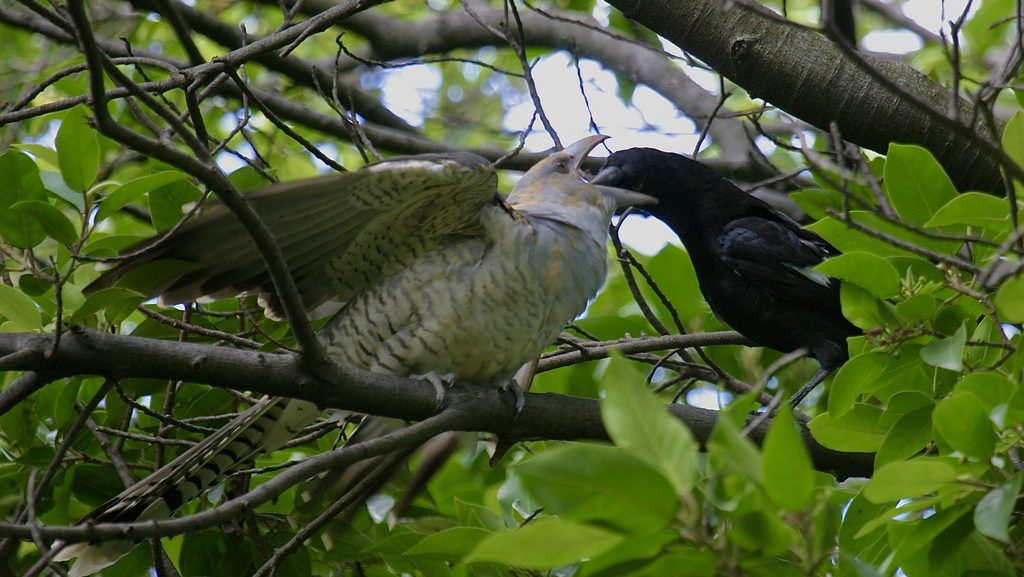
Currawongs are such a common host that the channel-billed cuckoos has evolved eggs that mimic the size and pattern of currawong eggs, making it harder for the host birds to detect that something’s amiss.
Unlike other cuckoo species, the female channel-bills don’t always destroy any eggs already in the nest, and neither do the newly hatched chicks. Even so, the host-species chicks are unlikely to survive, as the massive cuckoo baby will monopolize any food delivered to the nest. Watching young cuckoos feed is a comical experience, as the chicks are often twice as large as their adoptive parents.
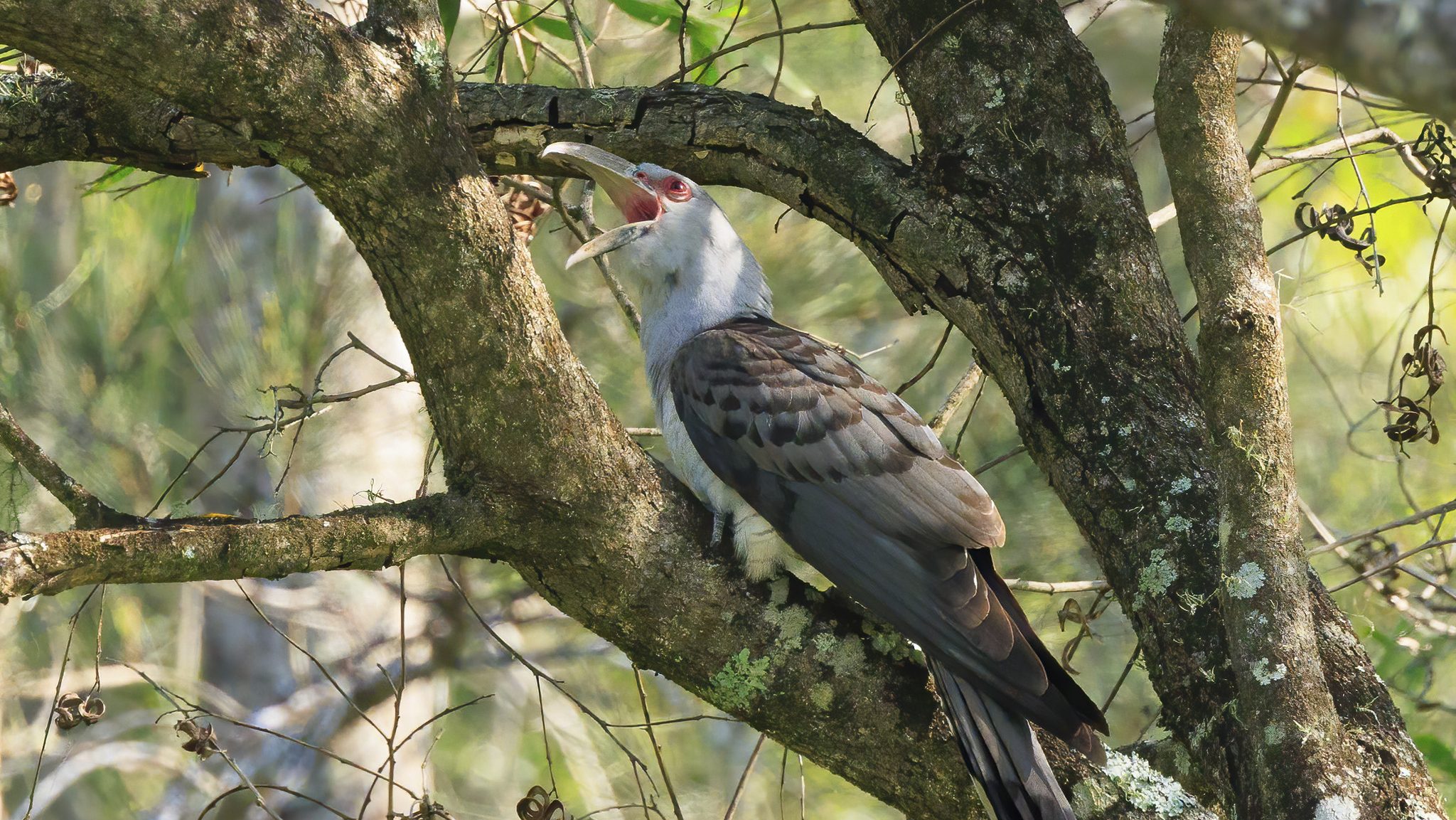
Birds of Summer
The cuckoos continue to swirl overhead as I walk home, their cries ricocheting through the neighborhood. Other summer migrants chime in, hidden unseen in the trees around me: the buzzy trills of common cicadabirds, and the plaintive kooo-el kooo-el of the koel. A metallic blue dollarbird perches on the power line above me, it’s orange bill glowing in the sunlight.
Australians mark the arrival of summer in many ways. It means start of the stifling heat, and lazy afternoons in the pool or at the beach. There are fresh mangoes and lychees, passionfruit and peaches. The race to mow the grass in between thunderstorms. (Or, in darker years, anxious hours watching for bush-fire warnings.) Barbecues with friends, with the monotonous drone of cricket in the background.
But for me, summer is the time of the channel-bills. The time of loud and raucous cuckoos winging overhead, when I’m lucky enough to see one of the world’s most marvellous birds on my morning walk.
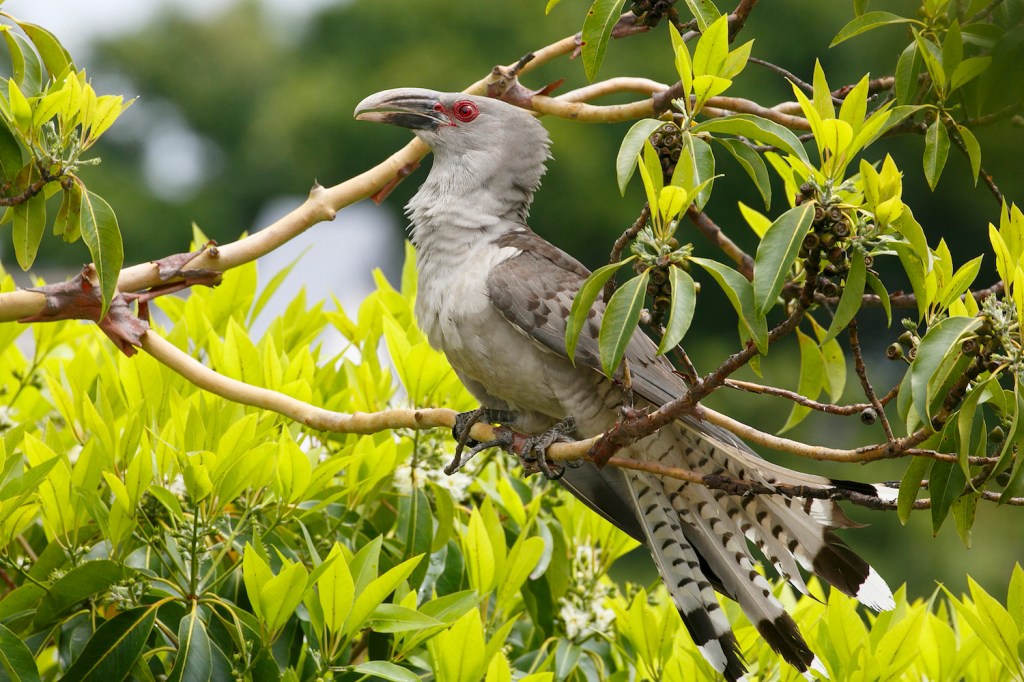



Very informative n interesting
Always reminds me barramundi season is kicking off .
I have at least one or two of these birds raised by crows in my Gold Coast backyard every summer! A very interesting article!
Thanks for another little slice of the world down under. From snakes in the rain gutters to wallaby baby rescue you open my eyes to that far away (from me) place.